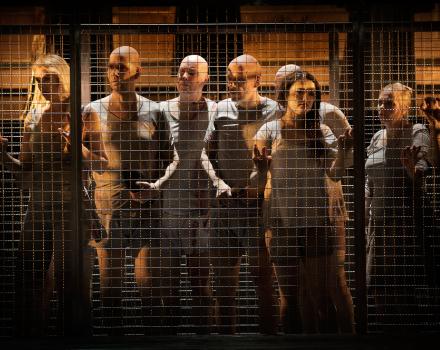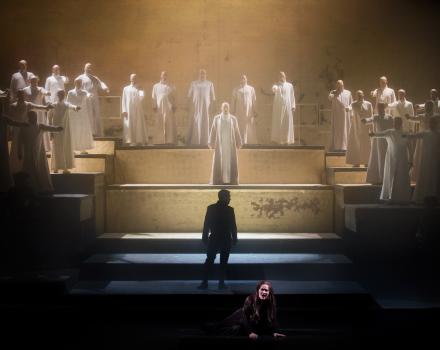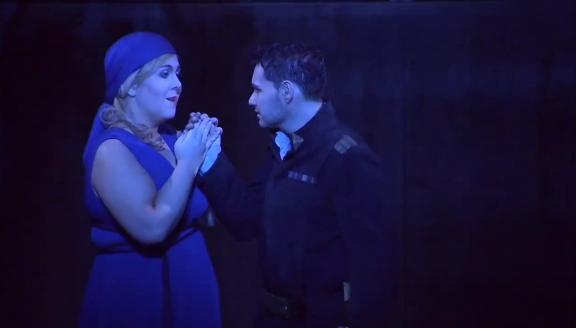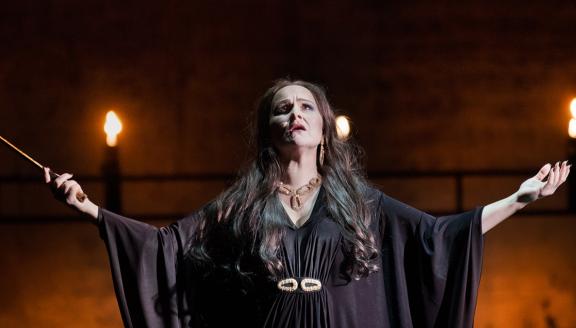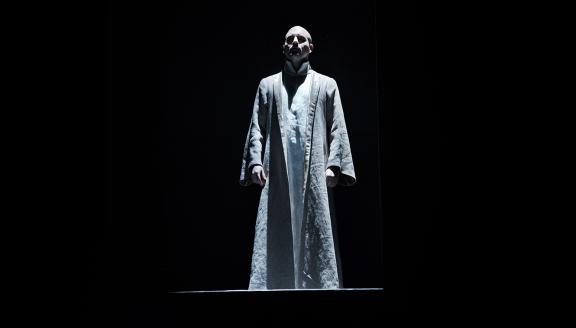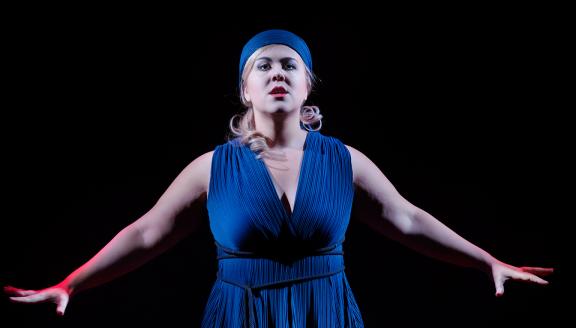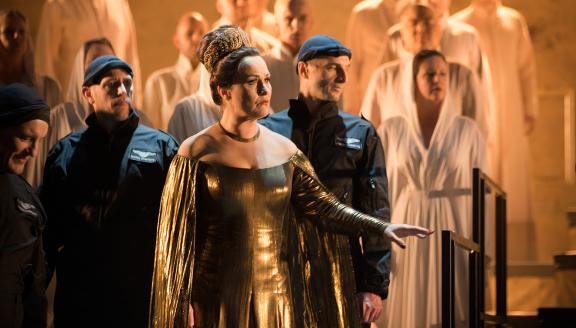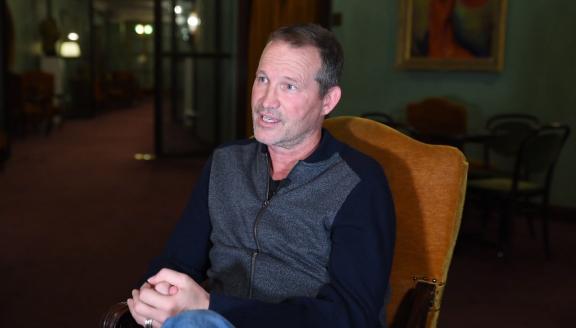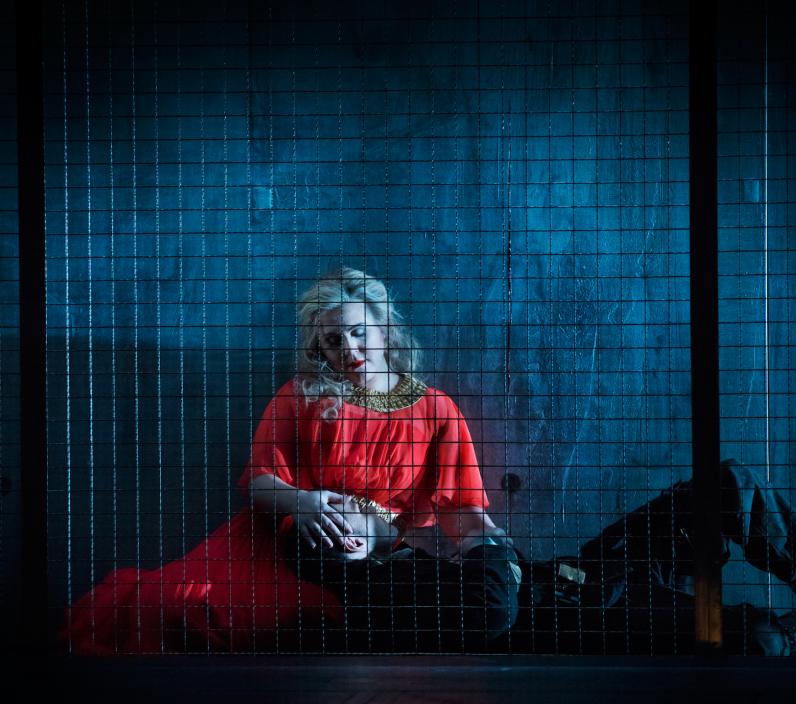

Aida

Will Aida and Radamès' love overcome the chaotic reality they live in?
Cast
|
The King of Egypt
|
Lennart Forsén
|
|---|---|
|
Amneris
|
Katarina Dalayman
|
|
Aida
|
Christina Nilsson
|
|
Radamès
|
Ivan Defabiani
|
|
Ramfis
|
Alessio Cacciamani
|
|
Amonasro
|
Johan Edholm
|
|
Messenger
|
Jihan Shin
|
|
High Priestess
|
Jessica Forsell
|
|
Chorus
|
Royal Swedish Opera Chorus
|
|
Orchestra
|
Royal Swedish Orchestra
|
| ... | |
|
Music
|
Giuseppe Verdi
|
|---|---|
|
Conductor
|
Pier Giorgio Morandi
|
|
Director
|
Michael Cavanagh
|
|
Sets
|
Magdalena Åberg
|
|
Lighting
|
Linus Fellbom
|
|
Costumes
|
Magdalena Åberg
|
|
Text
|
Antonio Ghislanzoni
|
|
Chorus master
|
James Grossmith
|
| ... | |
Video
The story
Act I
The Ethiopian princess Aida has been captured and enslaved, but her captors do not know of her importance. Radames is a commander in the Egyptian army and is in love with Aida, but also wants to be victorious on the battlefield – Aida’s father, the Ethiopiann King Amonasro, is invading Egypt in order to find and free his daughter.
Amneris is in love with Radames but knows that he loves another; she can see it in his face (‘Quale insolita gioia nel tuo sguardo’ / ‘In your looks I trace a joy unwonted’). She notices that when Aida appears, Radames changes, and she figures out that Radames’ love interest is Aida.
The King of Egypt enters with the news that Ethiopia is invading. Aida feels conflicted – she loves Radames, but she is loyal to Ethiopia.
Act II
Radames has won the battle, and the crowds celebrate. Aida is cornered by Amneris and told that Radames has died; she reveals her love for him and Amneris is enraged.
Aida finds her father Amonasro among the enslaved Ethiopians brought back by Radames and his troops following the battle. She goes to him. They lie to their captors and say that the Ethiopian king was slain in the battle. The Egyptians are none the wiser; all they see is a father and daughter. Radames pleads with his king to let the hostages go free. The king agrees, but keeps Aida and Amonasro hostage.
Act III
Near the temple of the goddess Isis, prayers are said to bless the upcoming wedding of Radames and Amneris ('O tu che sei d'Osiride' / ‘O thou who to Osiris art’). Radames meets Aida secretly and says he will marry her. Amonasro spies on their conversation, and when he reveals himself, Radames feels betrayed. Amneris and the high prist Ramfis see Radames and Aida together. Radames surrenders to arrest, refusing to flee with Aida and Amonasro.
Act IV
Radames refuses to listen to Amneris’s pleas to save himself from prison by denying the charges against him. He is sentenced to death. When he is sealed up in a vault to be buried alive, he finds Aida already there. She had hidden herself in the vault in order to be able to die together with him. They sing a duet (Radamès and Aida: 'La fatal pietra sovra me si chiuse' / ‘The fatal stone now closes over me’). As Amneris weeps in the temple, Aida and Radames die down below.
Insights
5 things to know about Aida
1° Aida was commissioned to celebrate the new Khedival Opera of Cairo
It is often said that Aida was commissioned in the 1860’s by the Viceroy of Egypt, Ismaïl Pacha, to inaugurate the new Suez Canal. It is more likely that the work was commissioned for the inauguration of the new Khedivial Opera in Cairo. Unfortunately, Aida was not ready for the opening of the Opera House and Rigoletto was performed instead. There were several reasons for this delay. Firstly, Verdi was behind his composition. Secondly, the set and costumes that were supposed to travel from Paris to Cairo are blocked in the capital because of the siege in Paris during the French-Prussian war (1870-1871). Aida finally has its premiere in Cairo on the 24 December 1871 and the following month in La Scala Milan.
2° A turning point in Verdi’s operas
Although Verdi did not attend the premiere in Cairo, the composer was at the Italian premiere carefully supervising every detail - from the set up of the instruments to the stage design. While his earlier works put emphasis on the voice, Aida appears as a turning point in his use of the orchestra. Verdi was without doubt influenced by Wagner, even though the latter’s music had not really reached Italy yet. Verdi only knew some extracts but was nonetheless impressed. Although their artistic conceptions diverge, Verdi felt the necessity to differentiate himself from the German composer.
3° Teresa Stolz: a Verdian soprano for Aida
Teresa Stolz, Italian soprano born in 1834, was one of Verdi’s favorite singers who sang in many operas accross Italy, including the roles of: Elisabetta in the Italian version of Don Carlo in Bologna in 1867, Leonora in La forza del destino in 1869 at La Scala. So it was that Verdi wrote Aida for her. But too expensive for the Cairo Opera, Teresa Stolz finally sang the title role a month and a half later, for the European premiere of Aida at La Scala on 8 February 1872.
4° An incredible world triumph
“Let’s not talk about this Aida anymore. It brought me a lot of money, but also it brought me endless troubles and great artistic disillusions!” Verdi confessed in one of his letters to his editor Tito Ricordi. Whatever the composer’s regrets, Aida was a huge international success. It was performed in many Italian cities – Palermo, Padova, Florence – and beyond; not only in Europe – Berlin, Vienna – but also American in places such as New York, Philadelphia, Chicago and Boston. Operas are seldom such an immediate success.
5° A modern staging from the Royal Swedish Opera far from the world of swords and sandals.
Far from the Egypt of the pharaohs and the usual pomp of Aida, director Michael Cavanagh chooses to anchor the story in the 21st century. His is a topical world where there are wars and political crises; where ethnicity and religion divides. Two rising opera stars, the soprano Christina Nilsson and the tenor Ivan Defabiani shine in this new production.
Gallery

